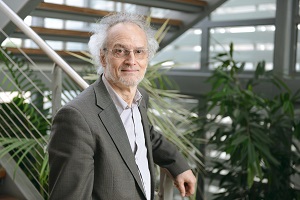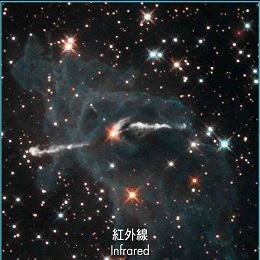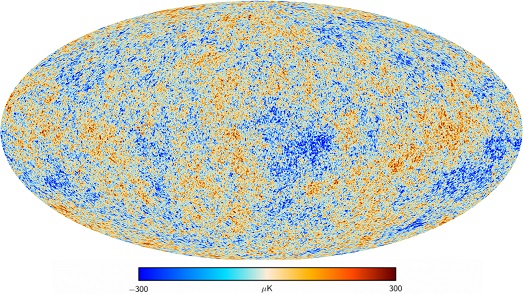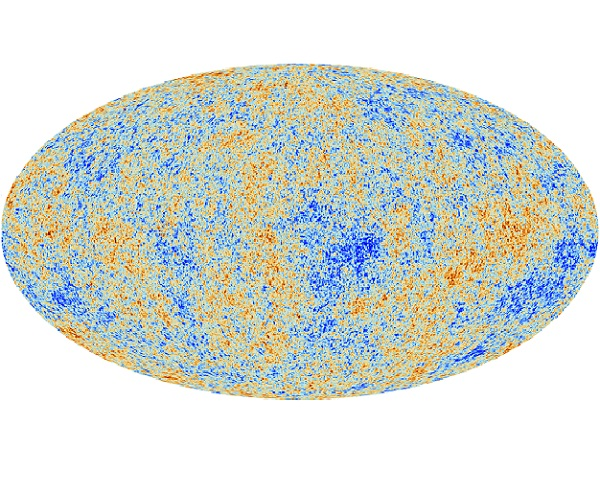The Shaw Prize was established in 2002. It consists of three annual prizes: Astronomy, Life Science and Medicine, and Mathematical Sciences. It honours individuals who have recently achieved significant breakthrough in academic and scientific research or applications and whose work has resulted in a positive and profound impact on mankind.
The Shaw Prize in Astronomy 2018 is awarded to Jean-Loup Puget for his contributions to astronomy in the infrared to submillimetre spectral range. He detected the cosmic far-infrared background from past star-forming galaxies, and proposed aromatic hydrocarbon molecules as a constituent of interstellar matter. With the Planck space mission, he has dramatically advanced our knowledge of cosmology in the presence of interstellar matter foregrounds.

Jean-Loup Puget was born in 1947 in Chalon-sur-Saône, Saône-et-Loire, France and is currently a researcher at the Institut d'Astrophysique Spatiale (IAS) of CNRS and Université Paris-Saclay, France. He is also the Principal Investigator of the High Frequency Instrument (HFI) of the Planck Mission of the European Space Agency. He studied at Ecole normale supérieure de Cachan, France in 1966 – 1970 and received his PhD in 1973. From 1973, he was a Researcher and Director of Research at the National Center for Scienti c Research in France. He served as Deputy Director of the Institute of Astrophysics of Paris from 1978 to 1982. He then joined IAS in Orsay, where he was successively Deputy Director (1990 – 1997) and Director (1998 – 2005). He is a member of the Académie des sciences (France).

Light, or electromagnetic radiation, covers much more than what we see with our eyes. Our eyes can see light with a wavelength of between about 400 and 700 nanometres (a nanometre is a millionth of a millimetre). However, there are many other types of radiation which we do not see. For example, infrared radiation has a slightly longer wavelength, and is emitted by warm objects. Submillimetre radiation with a wavelength of 0.1 - 1 mm is used in modern airport security devices as it passes through clothes and skin, but not through objects such as weapons. Microwave with a wavelength of around 10 cm can be used to heat up food as in microwave ovens.
Celestial objects emit a whole range of radiations. The wavelength of the radiation tends to be longer for colder objects, and shorter for hotter objects. Clouds of dust with absolute temperatures that range from tens to hundreds of degrees appear as black soot in visible light, but glow brightly at infrared wavelengths. Infrared telescopes can also peer through clouds of dust and gas which block visible light, to reveal the stars behind. The Universe emits microwaves with wavelength of about 1 mm in all directions very uniformly.

What gives off the nearly uniform microwave radiation? According to the Big Bang Theory, the Universe started with an extremely small singularity, and then expanded over the next 13.8 billion years to the cosmos today. When the Universe was very young and hot, it was made of a plasma, which continually emitted and re-absorbed light, preventing the light from traveling freely through space. Essentially, space was opaque. As it expanded and cooled, however, the plasma began to form neutral atoms, which did not absorb light in the same way. The Universe then became transparent, and light propagates essentially freely. The Cosmic Microwave Background (CMB) is the light that was emitted by the hot plasma at the moment the Universe went from opaque to transparent, when the Universe was 380,000 years old. That light was originally at optical and infrared wavelengths, but as space expands, that light is stretched to the microwave region.
This all-sky map shows the oldest light in our Universe, or the Cosmic Microwave Background. It shows tiny temperature ¬fluctuations in different directions (1 part in 100,000) that correspond to regions of slightly different densities which later grew to become the galaxies and large scale structure we see today.
Jean-Loup Puget has made pivotal contributions to astronomy in the infrared to submillimetre spectral range and advanced our knowledge in cosmology through the precise measurement of the CMB by the Planck mission.
In 1984, Léger and Puget proposed the presence of polycyclic aromatic hydrocarbon molecules in addition to solid dust grains as a major constituent of the interstellar medium to explain the previously unidentified infrared emission features of interstellar dust.
In 1996, Puget and the research team detected for the first time the far infrared background. This was given off when small dust grains in young galaxies absorbed ultraviolet radiation from forming stars, heated up and re-emitted in the far infrared, over the history of the Universe.
The culmination of Puget's work, building on his technical and scientific knowledge of far-infrared/submillimetre/millimetre astronomy, has been his leadership of the development and scienti c exploitation of the High Frequency Instrument (HFI) on the Planck satellite of the European Space Agency (ESA). Between 2009 and 2013, Puget and his international team used HFI's novel cryogenic sensors to measure the CMB plus the foreground emission due to the Milky Way's dust and gas with superb sensitivity between 350 microns and 3 millimetres. By working at these short wavelengths, HFI has studied the CMB with an angular resolution three times better than any alternative all-sky CMB map. HFI is also uniquely sensitive to foreground dust emission, which dominates at short wavelengths. The ability to separate foregrounds was critical to the Planck results, which measure the cosmological parameters to exquisite precision — for example, the total density of dark matter is measured to 2% accuracy.
The ESA's Planck spacecraft is approximately 4.2 m high and 4.2 m wide. The primary mirror is 1.5 m and is accompanied by two science instruments: the Low Frequency Instrument (LFI), which measures radiation with wavelengths between 4 mm and 10 mm, and the High Frequency Instrument (HFI), which operates between 0.3 mm and 3 mm. To complete the highly sensitive measurements, Planck's detectors were cooled to temperatures very close to absolute zero; otherwise their own emission of heat would spoil the measurements.
Image Credit: ESA (image by AOES Medialab)
Comparison of Cosmic Microwave Background results from different probes
Image Credit: NASA
This illustration shows how photons in the Cosmic Microwave Background (CMB) are detected by the gravitational lensing effect of massive cosmic structures as they travel across the Universe. Using data from the Planck satellite, astronomers have been able to measure this gravitational lensing of the CMB over the whole sky for the first time.
Image Credit: ESA and the Planck Collaboration
Today, the Universe expands in an accelerating manner. If Einstein's relativistic theory of gravity is correct, this requires a non-zero vacuum energy density. Alternatively, the acceleration may indicate a modification of the strength of gravity on large scales, in which case density fl¬uctuations in the Universe would develop at a non-standard rate. Planck can test for this effect, because the CMB radiation is detected by intervening mass fl¬uctuations. This gravitational lensing effect has been mapped comprehensively by Planck, and matches the expectations of standard gravity.
The CMB detects scattering due to ionized gas that is created by the first stars and quasars. The latest Planck data indicate that the onset of this reionization era was more recent than previously supposed: within the last factor of ten of the cosmic expansion. This result complements the far-infrared background's measurement of total energy release, closing in on a complete picture of the history of cosmic star formation.
This is an artist's impression of a portion in the timeline of the Universe. As the first stars came to life, they filled their surroundings with light, which subsequently split neutral atoms apart, turning them back into electrons and protons. This process is called cosmic reionisation. Planck's data have demonstrated that reionisation started much later than previously supposed.
Image Credit: ESA–C. Carreau


